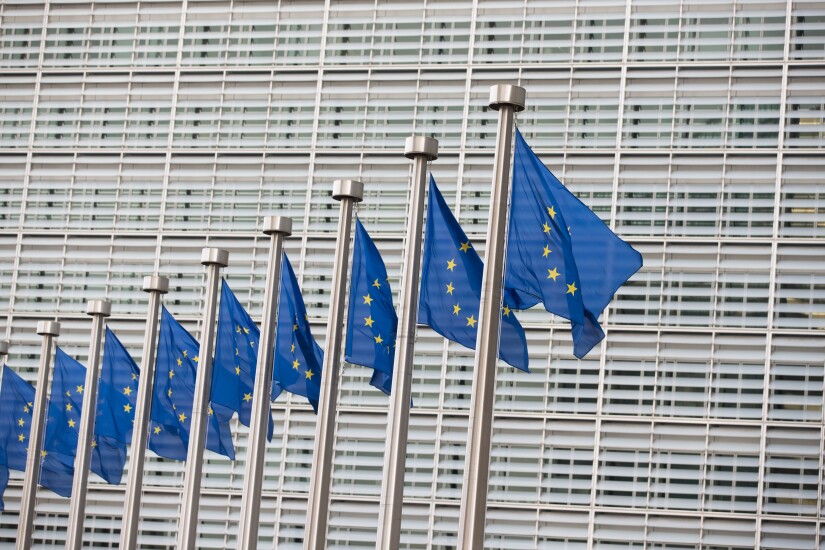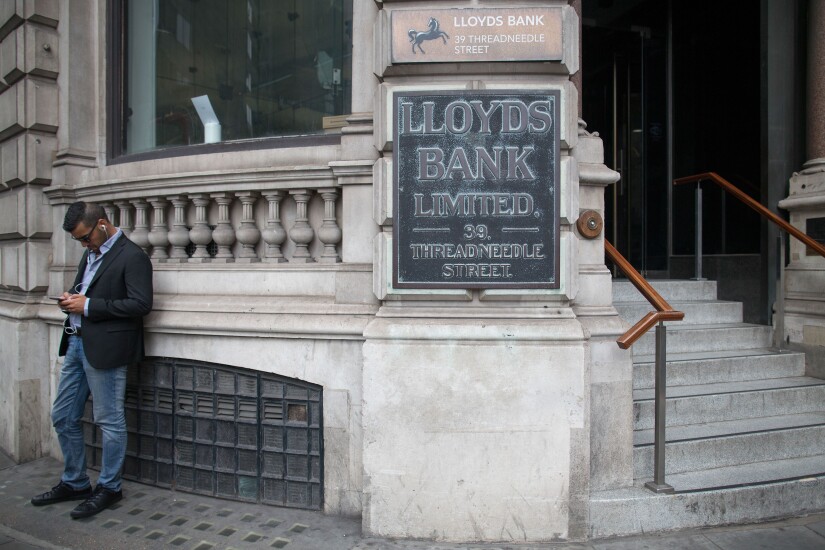More firms are developing stablecoins and related technology as regulations advance. And the Interledger Foundation is trying to expand the banks that can offer remittances between the U.S. and Mexico, while Lloyds and CIBC are on the hunt for AI talent. Here's what's happening in the world of payments.

U.K. central bank, BIS measure stablecoins' fiscal health
The Bank of England and the Bank for International Settlements have built a tool that can track stablecoins and their reserves. The system is part of Project Pyxtrial, a year-old initiative at BofE and the BIS Innovation Hub to monitor stablecoin balance sheets.
The tool includes a digital pipeline that accrues data and feeds that information into an analytics engine to measure the stablecoin's reserve assets. System components include application programming interfaces that enable government agencies such as regulators to access Pyxtrial's technology.
The system's data modeling and dashboard are modular and designed to be reusable to monitor different stablecoins or other non-stablecoin digital payment products that are backed with real-world assets. The project comes as regulators push for rules requiring stablecoins to be prepared to pay their holders in full in the event of a bankruptcy or other economic problem.
In Switzerland, the
To protect investors from the volatility of cryptocurrency, stablecoins are backed by reserves of traditional currency such as U.S. dollars or euros (but often other assets), thus making stablecoins a potential fit for retail payments.
Stablecoin issuers usually make periodic disclosures of the makeup of their reserves and whether the stablecoin is a 1:1 ratio between its market capitalization and the value of its backing assets. The new regulations in Europe tighten those disclosure requirements. —John Adams

Payment companies plot stablecoin as regulatory picture clears
Dublin-based digital payments company
The law, which governs risk and consumer protections for cryptocurrencies, went into effect in June 2023, and a stablecoin-specific portion of the law went into effect earlier this year. The rules will boost EU-based stablecoins, which don't presently have a high profile, according to Next Generation, adding it anticipates a market capitalization of about $4 billion for EURT. EURT will use the Stellar blockchain and will contract with an international auditing company to monitor the assets that will back the stablecoin.
Next Generation and Decta plan to partner with financial institutions to build a market of users to invest in, store and use EURT for payments and other transactions. —John Adams

Swiss startup Okoora leans into cross-border payments opportunity
The app, which is available on Android and iOS devices, is designed to limit exposure to fluctuations in currency exchange markets and syncs with the startup's cloud-based Automated Business Currency Management desktop client. That enables Okoora customers to convert currency and initiate domestic and cross-border payments from a mobile device, according to an Okoora release. More than 100 currencies can be exchanged across over 150 countries.
"This move is designed to ensure that our users can manage their foreign currency needs efficiently and effectively, no matter where they are," CEO and founder Benjamin Avraham said in a release.
Other players moving into the space are Chinese technology company Ant and French investment bank BNP Paribas, which announced a collaboration to

Monzo seeks consumers for its U.S. expansion
Savings Jar includes a feature that customers use to set goals based on desired savings amount and time frame to build those savings. Monzo calculates how much consumers need to set aside from each direct deposit to meet that goal. The new bonus interest rate will be available to all consumers, but 9-year-old Monzo is launching it with the U.S. in mind.
A group of investors including Alphabet's venture unit recently
Monzo is expected to work with a U.S.-regulated partner for its renewed U.S. push. —John Adams

Remittance portal emerges for Mexican community banks
The U.S.-Mexico corridor is one of the world's largest remittance pairings and also
The Interledger product is attempting to enable community banks and credit unions in Mexico to compete through shared technology. Interledger is a nonprofit organization that encourages interoperable financial transactions as a way to improve inclusion. It is partnering with the People's Clearinghouse, an organization that partners with small financial institutions in Mexico to build scale.
The Interledger/People's Clearinghouse remittance corridor is expected to have a network of about 140 financial institutions. These institutions are often shut out of the cross-border payments industry due to their lack of scale and technology, according to the Interledger Foundation, which also argues that consumers face higher fees as a result. —John Adams

Canadian fintech to acquire licensed payment company in Brazil
The acquisition, which was agreed to on Aug. 5, will enable Nuvei to accept payments and manage e-wallets and sports betting accounts in the country. A license is required to provide transactional services in the sports betting and online gaming industry in Brazil, according to a Nuvei release.
"Securing a Payment Institution license in Brazil has been a top priority, and will mark another significant milestone in our global expansion strategy," Nuvei Chair and CEO Philip Fayer said in the release. "The proposed transaction not only strengthens our presence in LATAM but also demonstrates our commitment to providing fully localized and modern payment solutions to businesses in Brazil."
Brazil has been a

Wirecard scandal spawns new arrests
Alexander von Knoop, who was Wirecard's finance chief, was charged with aiding and abetting embezzlement. Susanne Steidl, a former Wirecard board member, was also charged.
Both executives allowed suspect loans and payments to proceed despite red flags, according to prosecutors. These transactions resulted in hundreds of millions of dollars in losses.

Lloyds beefs up talent for AI push
Rohit was head of data and AI strategy for the Asia-Pacific region for AWS, where he developed AI products for AWS-powered retail products for Amazon and sold AI services for third parties.
At Lloyds, he will oversee more than 50 AI pilot tests for internal and external functions, including customer service, chatbot tools and fraud detection. The bank has hired more than 1,500 technology and data specialists in 2024, with a total of more than 4,000 over the past three years as part of its AI strategy.
Lloyds is competing with

CIBC plans hiring spree in AI, data jobs
The country's fifth-largest bank has carried out a number of pilot programs using generative AI and is adding staff to boost those efforts, said Christina Kramer, the bank's head of technology and innovation, in a statement seen by Bloomberg News.
"Now is the right time to add to our talent base through hiring and upskilling in data and AI focused roles," Kramer said. The bank has been using AI for years to manage risk, fraud and information security.
The move comes as competitors have also started to ramp up their adoption of artificial intelligence.
Toronto-Dominion Bank is using technology from Canadian AI unicorn Cohere Inc. for tasks like interpreting financial documents. Royal Bank of Canada said in 2022 that it would grow its Calgary hub for technology research to 300 employees, in addition to two existing tech centers in Montreal and Halifax, Nova Scotia. —Aimee Look, Bloomberg News





